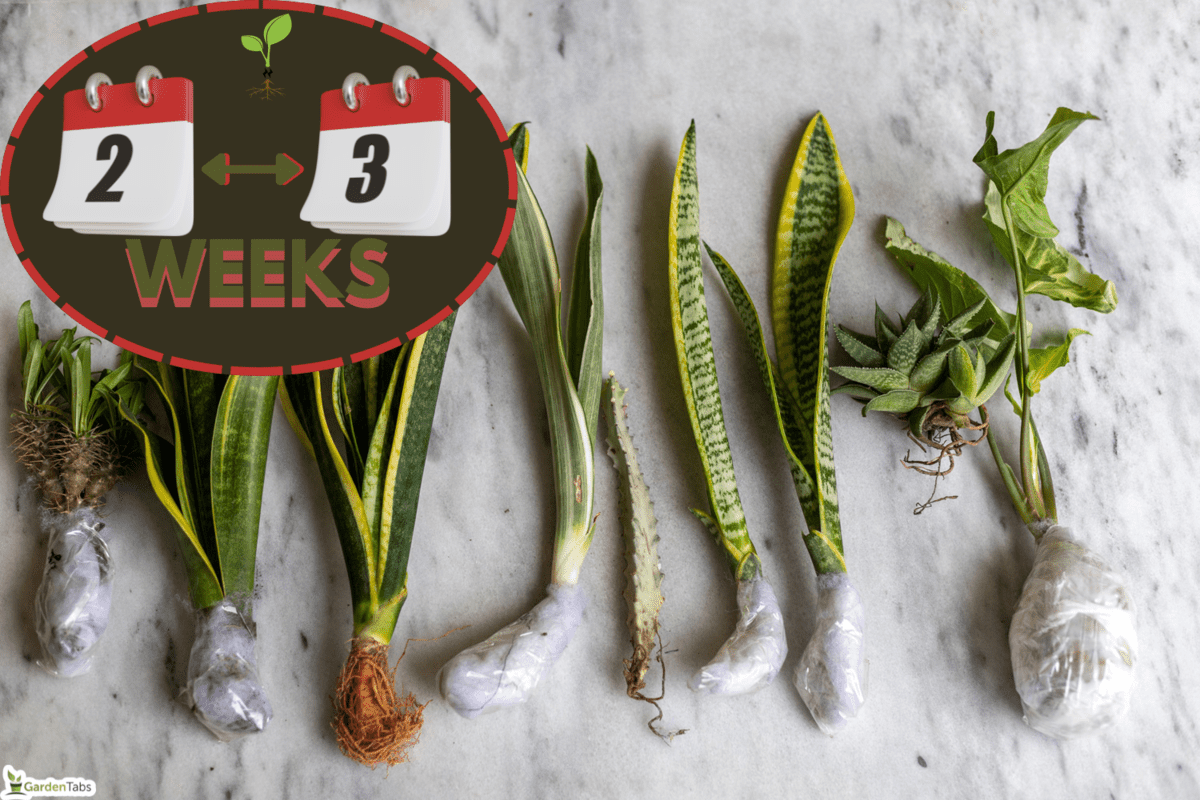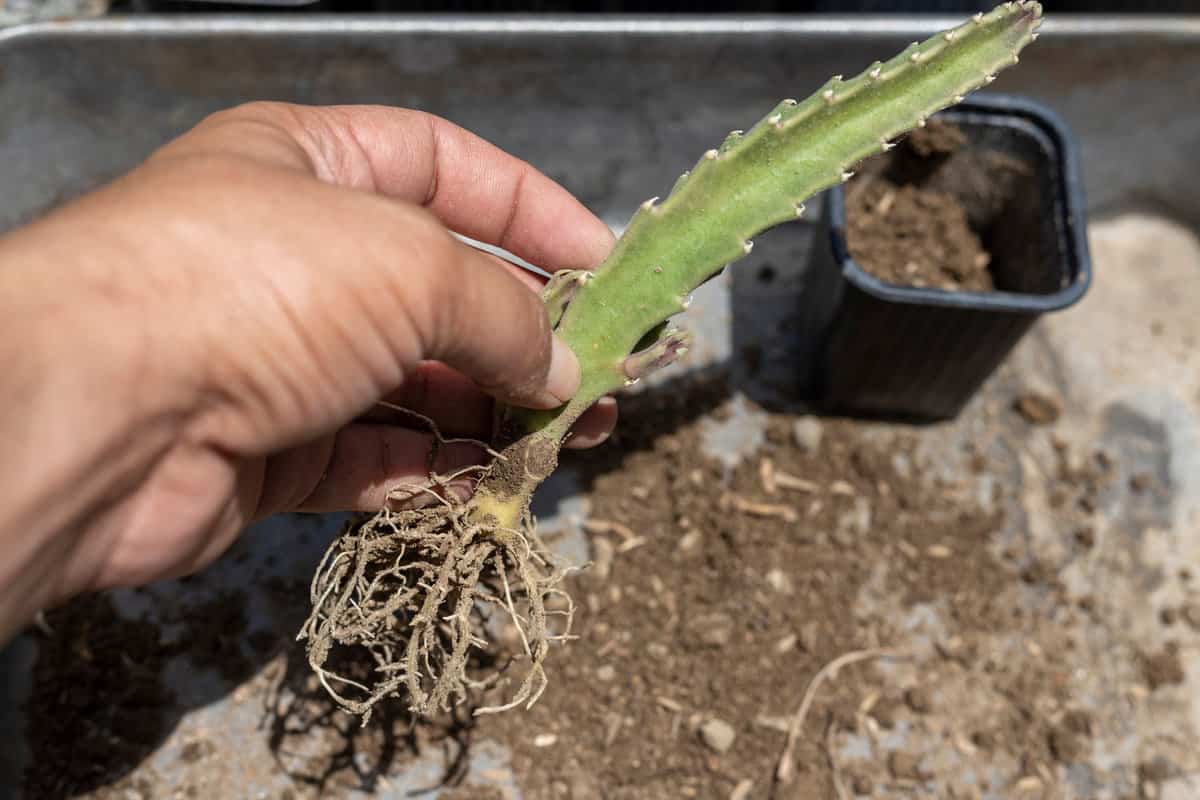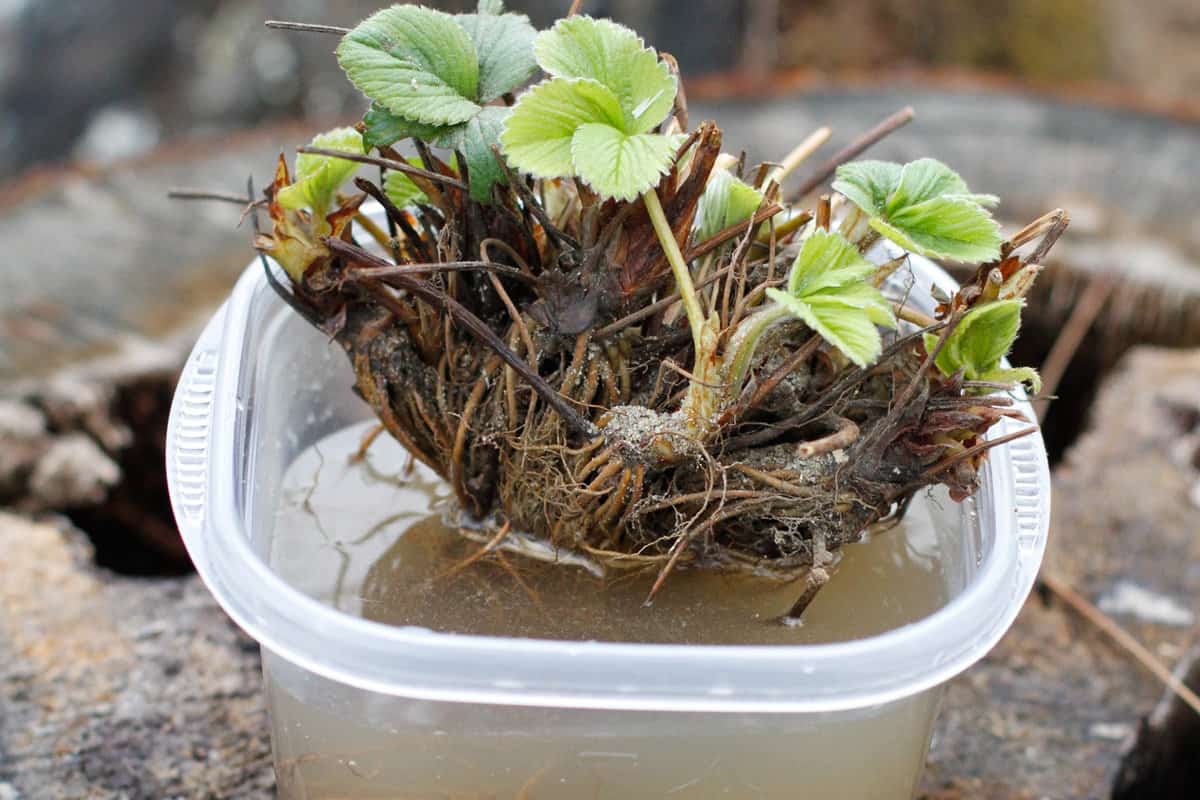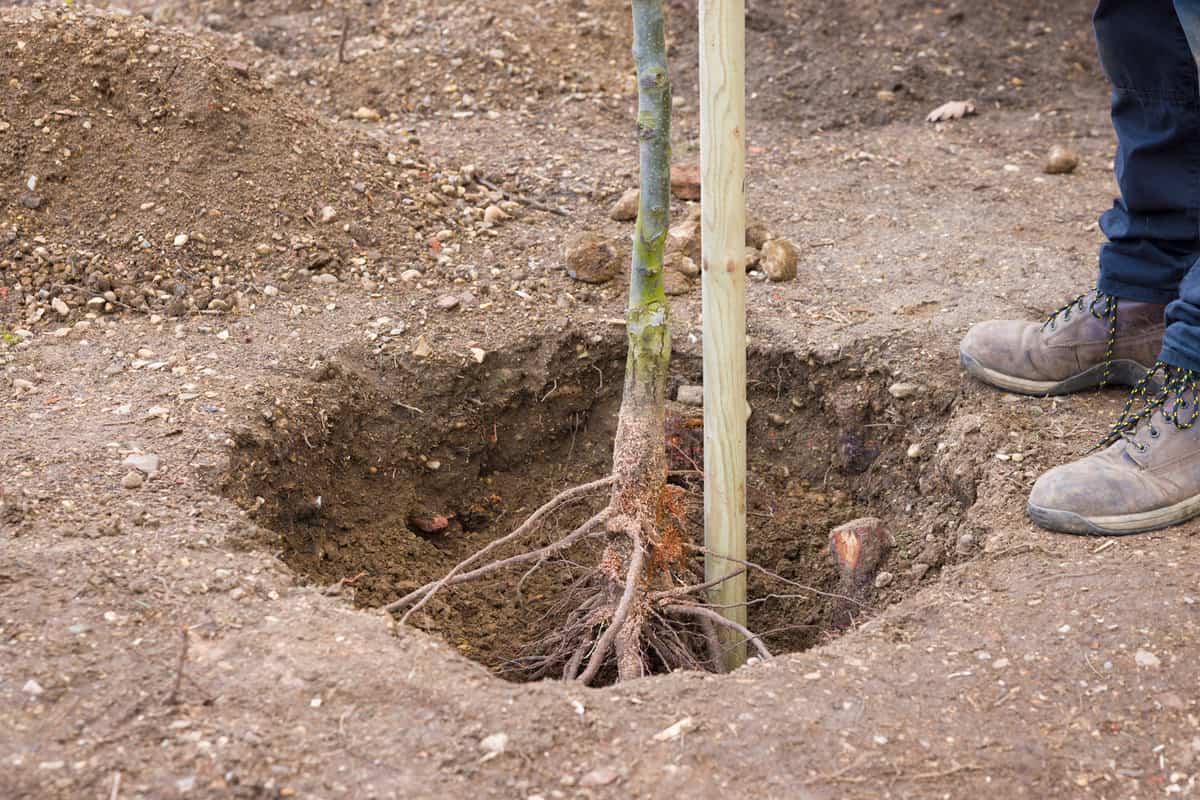If you've recently bought bare-root plants from a nursery, you may worry that the outside conditions will not help the plant to grow. How long will these plants last before they need to be planted? We've researched this topic to bring you the answers you need.
Bare-root plants can survive 2-3 weeks or longer if you keep them in their original packaging. Within this period, avoid drying the roots. You can also place them in the refrigerator or other frost-free and shaded storage.
Other options to keep the plants are heeling them in, covering the roots with damp paper, or adding hydrogel slurry. Also, moisture in the roots is critical when storing the plant. Protecting the roots is vital so that you won't worry if you delay planting. Read further to learn more.
How Long Can You Store Bare-Root Plants?
It is exciting to receive your bare-root plants for your gardening projects. Bare roots are good if you are creating your landscape. Yet, sometimes, you can buy the plants at the wrong time.
Depending on the type of plant, you should not store bare-root plants longer than 24-48 hours. Once the plants arrive from the nursery, you should plant them within the timeframe. However, you might not be able to plant if the conditions outside are not yet suitable.
You might want to delay the planting for a few days because the weather is still too cold or the soil is not yet workable due to frost. It is possible to store the plants for 2-3 weeks or longer.
With the proper methods, you can store the plants in their packaging until the temperature is more than 40ºF and the soil defrosts.
Learn how to store the plants before you plant them.

How To Store Bare Root Plants Longer
Storing the plants is critical so that they can survive. You should be careful with bare-root plants because improper storage can affect their growth.
Before storing, you should inspect the plants once they arrive. Check the buds, twigs, stems, and roots. If the plants are brittle, dry, or shriveled, you should discard them. If the plants are fine, proceed to store them.
Here are your options on how to store the plants for longer:
- Keep the plant in its original packaging. If you store for more than a week, make sure that the water in the packaging keeps the roots moist and not soggy.
- Dip the roots in hydrogel slurry to extend them another week. Secure the roots with a pleated plastic bag. You also cover the bag with a tarp.
- You can also place the plants inside a refrigerator or a cool, frost-free, and shaded place.
- If you observe that the plants are growing, plant them indoors first and wait until the frost is over. Add a cold frame or floating row covers for easy transplanting.
- Do the heeling-in method. Plant temporarily in a shaded, well-drained, and wind-protected area.
Moreover, here are the things you should not do when storing bare roots.
- Do not let the plant dry out before you store them.
- Do not remove the plant from its packaging unless you are ready to plant.
- Never soak the bare roots in a bucket of water. If you do, the roots will not get oxygen.
- You should not store the plants together with fruits and vegetables. These give off gases that will harm the plants.
Heeling-In Bare Roots
Another method you could use is heeling-in. This means temporarily planting the plant in your backyard over the winter. The steps for this method are as follows:
- Find a protected and shaded area in your yard.
- Dig a V-shaped trench on the ground. The trench should be deep enough to accommodate the plant.
- Remove the plant from its packaging. You should soak the roots in water for 1 hour.
- Lay the plant on the trenches at an angle.
- Fill the trench with soil.
- Water until the soil is lightly moist.
The heeled-in plants will stay as long as 1 month during spring. If you heel in your plants during fall, you can overwinter the plants and then plant them in early spring.
If you are ready to plant on a permanent site, carefully pull out the plant from the trenches. Remember to rinse the plant before you plant.
What Happens If You Expose The Bare Roots To Air?

The term for moisture loss is desiccation. This situation will decrease the regrowth quality of the bare root stock plant.
You must not leave the roots exposed to room temperature and humidity because you will dry out the roots. Exposing the bare root plants will cause the loss of 2-3% of their fresh weight per hour. The roots need moisture to keep them alive. If you leave them exposed overnight, the plant will die.
You can control the water loss by maintaining temperatures near 32°F in refrigerated storage. The temperature inside must keep out the moisture until you are ready to plant.
Supplementing the refrigeration, you can place the plant in plastic films. It is best to keep the plants in the original packaging when storing them. If you remove the packaging, the recommended plastic for bare roots is a 4-mil polyethylene film.
Can You Keep Bare Root Trees In Water?

The problem with storing bare roots is moisture. Water can help the plants to get some moisture, as long as you give the right amount. You should keep the roots moist and not soggy.
Before you store the plant, you should hydrate the roots. Remove the packaging, then soak the roots in a bucket of lukewarm water for 30 minutes up to 2 hours.
If you are ready to plant, submerge the roots of the plant for at most 24 hours before planting.
When Is The Best Time To Plant The Bare Roots?

Timing is critical when planting bare roots. Plan when to plant to determine how long you need to store bare roots. The best time to plant will vary due to the type of plant and your location's hardiness zone.
For bare roots, you should plant them from late fall to early spring when the weather is cool. During those times, the plant is still dormant. Check if the conditions outside are already suitable. If not, store them.
How To Plant Bare Roots
Before you plant, select the right spot by considering these factors:
- Sun - Check if your plant loves sunlight or needs some shade.
- Soil - Determine the soil requirements of the plants. Amend the soil if needed. Also, the soil temperature should be at least 45° F.
- Size - You should know how big the plant can grow when it matures. Allow enough space based on the expected plant size.
When the conditions are already okay, you can plant the stored bare roots. Follow the procedure below:
- Remove the packaging of the bare root. Prepare the plant by soaking the roots in tap water for 4-6 hours, not exceeding 24 hours.
- While waiting, dig a hole in the ground that is a little wider than the root mass.
- Create a mound of soil on the hole's center.
- Then, place the plant and spread out the roots.
- Add soil. Make sure that the crown is level with the soil to avoid rots. Cover the top of the roots with 1-2 inches of soil.
- Water the soil.
- You can add fertilizer if you don't plant in the fall. It is best to wait for 4-6 weeks before fertilizing.
- Continue filling the hole with soil.
- Add mulch to the soil. Keep a distance of 4-6 inches from the base of the plant.

Tips When Growing Bare Root Plants
Listed are some tips when you are growing bare-root plants:
- Use mulch from quality bark, compost, or straw.
- Stake the plant for one year for support.
- Continue watering the soil regularly so it will not dry.
Green shoots growing is a sign that the bare roots are not dormant anymore. Continue taking care of the plant until it leafs out and grows flower buds.
In Summary
Bare root plants can survive for 2-3 weeks if you remain their packaging and keep their roots moist. You can plant the bare roots from fall to spring. If the conditions are not yet ready, you should properly store the plant.
Most will store the plant in a refrigerator while constantly checking the moisture levels. When storing, you should avoid drying out the roots. Air and water exposure is critical for bare roots. Hence, you must know how long to expose the roots to these elements.
If you follow the correct methods, your bare-root plants will grow well.
For other gardening topics, check out these great posts:
How Long Do Hostas Take To Grow? [Inc. From Bare Root, Bulb, Or Seed]
